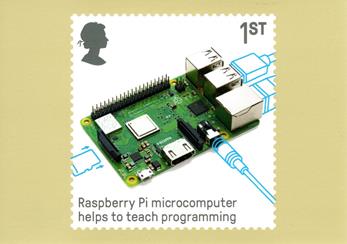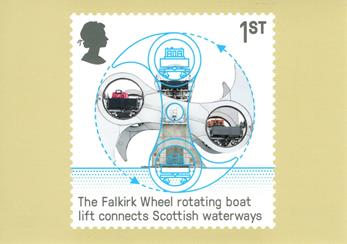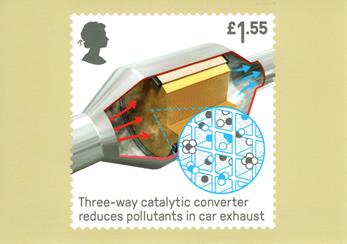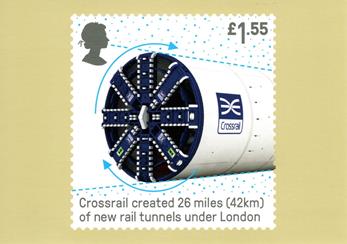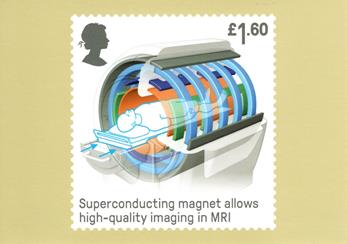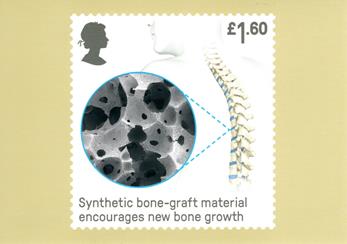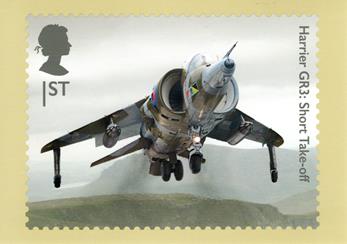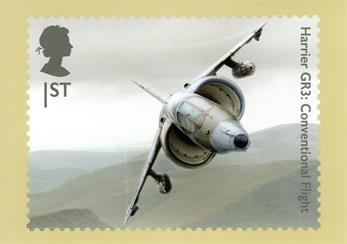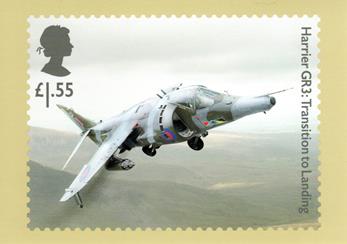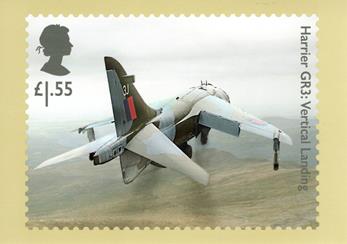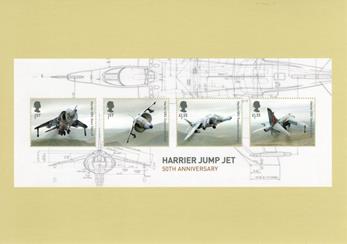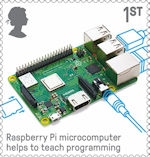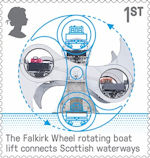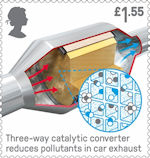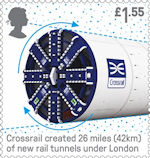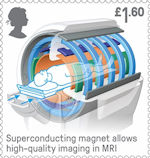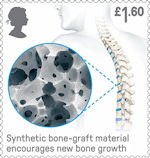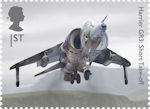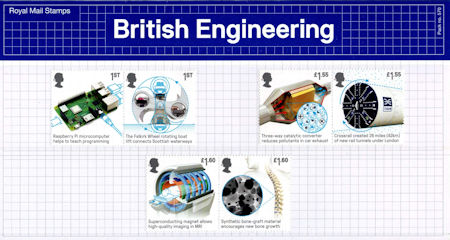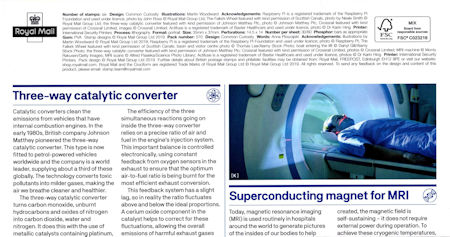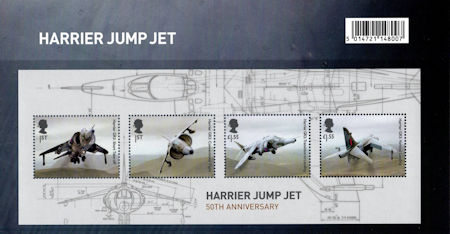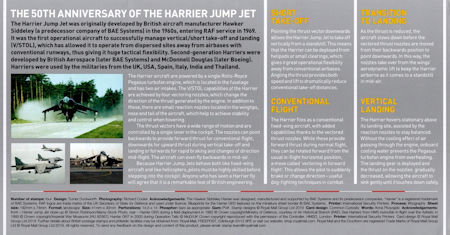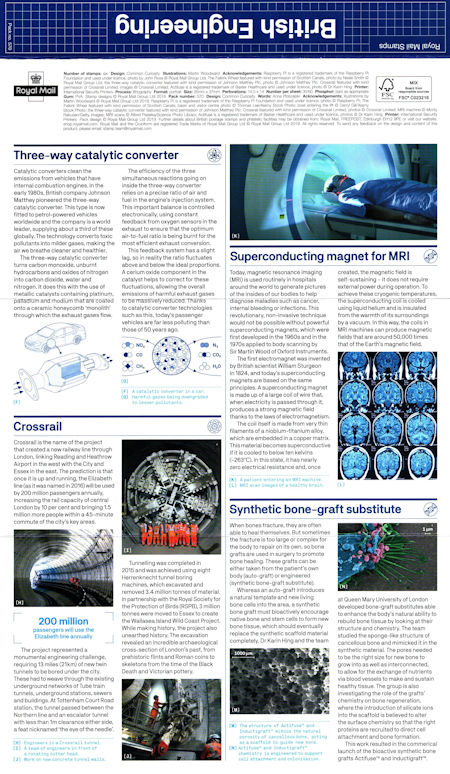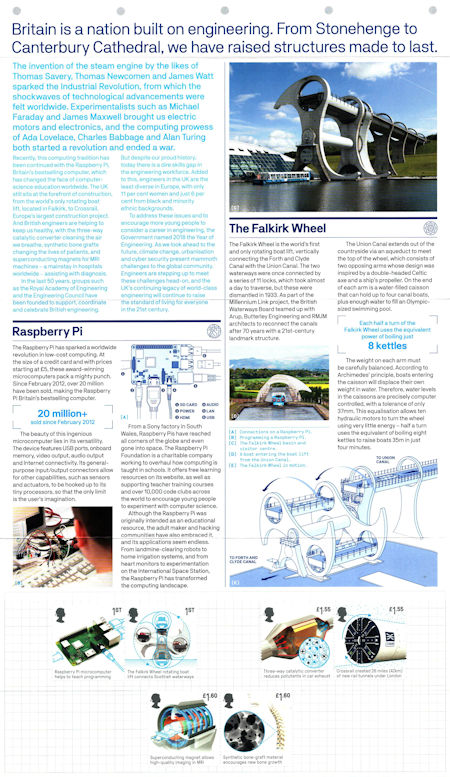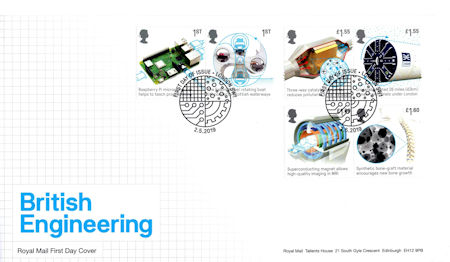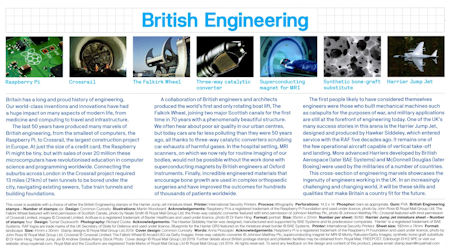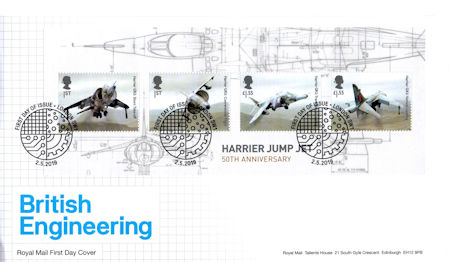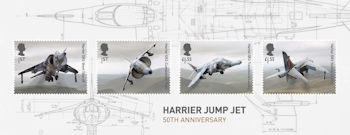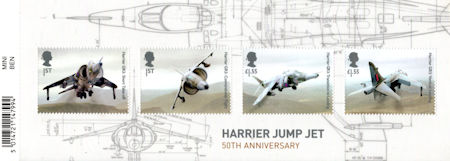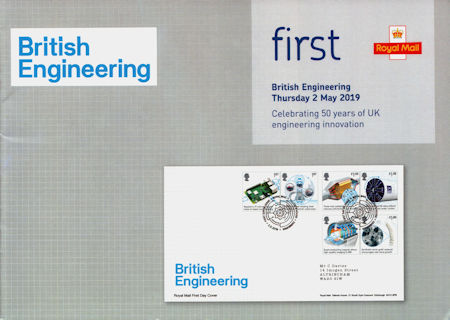British Engineering
2019 (May 2 2019)Commemorative
Designed by Turner Duckworth
Size 41mm (h) x 30mm (v)
Printed by International Security Printers
Print Process Lithography
Perforations 14.5 x 14
Gum PVA
Stamps
Raspberry Pi
1stThe Raspberry Pi has sparked a worldwide revolution in low-cost computing. At the size of a credit card and with prices starting at £5, these award-winning microcomputers pack a mighty punch. Since February 2012, over 20 million have been sold, making the Raspberry Pi Britain’s bestselling computer. The beauty of this ingenious microcomputer lies in its versatility. The device features USB ports, onboard memory, video output, audio output and Internet connectivity. Its general purpose input/output connectors allow for other capabilities, such as sensors and actuators, to be hooked up to its tiny processors, so that the only limit is the user’s imagination. From a Sony factory in South Wales, Raspberry Pis have reached all corners of the globe and even gone into space.
Falkirk Wheel
1stThe Falkirk Wheel is the world’s first and only rotating boat lift, vertically connecting the Forth and Clyde Canal with the Union Canal. The two waterways were once connected by a series of 11 locks, which took almost a day to traverse, but these were dismantled in 1933. As part of the Millennium Link project, the British Waterways Board teamed up with Arup, Butterley Engineering and RMJM architects to reconnect the canals after 70 years with a 21st-century landmark structure.
Catalytic Converter
£1.55Catalytic converters clean the emissions from vehicles that have internal combustion engines. In the early 1980s, British company Johnson Matthey pioneered the three-way catalytic converter. This type is now fitted to petrol-powered vehicles worldwide and the company is a world leader, supplying about a third of these globally. The technology converts toxic pollutants into milder gases, making the air we breathe cleaner and healthier. The three-way catalytic converter turns carbon monoxide, unburnt hydrocarbons and oxides of nitrogen into carbon dioxide, water and nitrogen. It does this with the use of metallic catalysts containing platinum, palladium and rhodium that are coated onto a ceramic honeycomb ‘monolith’ through which the exhaust gases flow. The efficiency of the three simultaneous reactions going on inside the three-way converter relies on a precise ratio of air and fuel in the engine’s injection system.
Crossrail
£1.55Crossrail is the name of the project that created a new railway line through London, linking Reading and Heathrow Airport in the west with the City and Essex in the east. The prediction is that once it is up and running, the Elizabeth line (as it was named in 2016) will be used by 200 million passengers annually, increasing the rail capacity of central London by 10 per cent and bringing 1.5 million more people within a 45-minute commute of the city’s key areas. The project represented a monumental engineering challenge, requiring 13 miles (21km) of new twin tunnels to be bored under the city. These had to weave through the existing underground networks of Tube train tunnels, underground stations, sewers and buildings.
MRI Scanner
£1.55Today, magnetic resonance imaging (MRI) is used routinely in hospitals around the world to generate pictures of the insides of our bodies to help diagnose maladies such as cancer, internal bleeding or infections. This revolutionary, non-invasive technique would not be possible without powerful superconducting magnets, which were first developed in the 1960s and in the 1970s applied to body scanning by Sir Martin Wood of Oxford Instruments. The first electromagnet was invented by British scientist William Sturgeon in 1824, and today’s superconducting magnets are based on the same principles.
Bone-graft
£1.60When bones fracture, they are often able to heal themselves. But sometimes the fracture is too large or complex for the body to repair on its own, so bone grafts are used in surgery to promote bone healing. These grafts can be either taken from the patient’s own body (auto-graft) or engineered (synthetic bone-graft substitute). Whereas an auto-graft introduces a natural template and new living bone cells into the area, a synthetic bone graft must bioactively encourage native bone and stem cells to form new bone tissue, which should eventually replace the synthetic scaffold material completely.
PHQ Cards
